Vertical Handoff Algorithm for Improving User Experience
-
摘要: 针对由超密集异构无线网络的超高动态性而引起掉话率不断增长的问题,并考虑到以往基于模糊逻辑相关垂直切换算法的较大时间开销,该文提出一种改善用户体验的垂直切换算法。首先利用5G核心访问和移动管理功能发现终端附近的所有候选网络,同时,利用自组织网络技术的环境感知能力,随时监测网络的运行状况,主动维护网络之间的邻居关系表。然后,引入动态模糊神经网络(DFNN)算法来执行切换判决,将获取到的网络参数数据作为该系统的输入,动态生成对垂直切换有效的规则库,经学习之后,计算得到输出判决值,从而为终端选择最佳接入网络。最后,仿真结果表明,该算法能够明显改善垂直切换过程中的掉话情况,降低切换失败概率。同时,与其他同类算法的时间消耗相比,该算法能够维持在一个较低的水平。Abstract: In order to solve the problem that the drop rate keeps increasing due to the ultra-high dynamic characteristics of ultra-dense heterogeneous wireless networks, and considering the large time cost of previous vertical handoff algorithm based on fuzzy logic correlation, a vertical handoff algorithm for improving user experience is proposed. Firstly, 5G core access and mobile management functions are used to discover all candidate networks near the terminals. At the same time, the environment awareness ability of Self-Organized Network(SON) technology is used to monitor the running status of networks at any time and maintain actively the neighbor relationship table between them. Then, the Dynamic Fuzzy Neural Network (DFNN) algorithm is introduced to execute the handover decision, and the network parameters obtained are taken as the input of the system to generate dynamically a rule base that is effective for vertical handoff. After learning, the output decision value is calculated, and the best access network for the terminal is selected. Finally, the simulation results show that the algorithm can significantly alleviate the drop of calls in the process of vertical handoff and reduce the probability of handover failure. Meanwhile, compared with other similar algorithms, it can maintain a lower time cost.
-
Key words:
- Self-Organized Network(SON) /
- Ultra-dense /
- Vertical handoff /
- Dynamic rules
-
表 1 网络仿真参数
网络 覆盖半径(m) 发送功率(dBm) 路经损失(dBm) 总带宽(Mbit/s) 时延(ms) 宏基站
微基站
WiFi全覆盖
150
10050
33
2554
34
3010
10
601
随机
20 -
[1] KULACZ L and KLIKS A. Reliability of bio-inspired ultra-dense networks[C]. 2020 Baltic URSI Symposium (URSI), Warsaw, Poland, 2020: 15–18. [2] TONG Haonan, WANG Tao, ZHU Yujiao, et al. Mobility-aware seamless handover with MPTCP in software-defined HetNets[J]. IEEE Transactions on Network and Service Management, 2021, 18(1): 498–510. doi: 10.1109/TNSM.2021.3050627 [3] ALJERI N and BOUKERCHE A. A two-tier machine learning-based handover management scheme for intelligent vehicular networks[J]. Ad Hoc Networks, 2019, 94: 101930. doi: 10.1016/j.adhoc.2019.101930 [4] ALMUTAIRI A F, AL-GHARABALLY M, and SALMAN A A. Particle swarm optimization application for multiple attribute decision making in vertical handover in heterogenous wireless networks[J]. Journal of Engineering Research, 2021, 9(1): 176–187. doi: 10.36909/jer.v9i1.10331 [5] HASAN M M, KWON S, and OH S. Frequent-handover mitigation in ultra-dense heterogeneous networks[J]. IEEE Transactions on Vehicular Technology, 2019, 68(1): 1035–1040. doi: 10.1109/TVT.2018.2874692 [6] 马彬, 王梦雪, 谢显中. 超密集异构无线网络中基于位置预测的切换算法[J]. 电子与信息学报, 2020, 42(12): 2899–2907. doi: 10.11999/JEIT190751MA Bin, WANG Mengxue, and XIE Xianzhong. Handoff algorithm based on location prediction in ultra-dense heterogeneous wireless network[J]. Journal of Electronics &Information Technology, 2020, 42(12): 2899–2907. doi: 10.11999/JEIT190751 [7] 马彬, 汪思霖, 谢显中. 基于区间标记判决的稳健垂直切换算法研究[J]. 电子学报, 2020, 48(5): 891–898. doi: 10.3969/j.issn.0372-2112.2020.05.008MA Bin, WANG Silin, and XIE Xianzhong. Research on robust vertical handoff algorithm base on interval mark decision[J]. Acta Electronica Sinica, 2020, 48(5): 891–898. doi: 10.3969/j.issn.0372-2112.2020.05.008 [8] LIN Yan, ZHANG Zhengming, HUANG Yongming, et al. Heterogeneous user-centric cluster migration improves the connectivity-handover trade-off in vehicular networks[J]. IEEE Transactions on Vehicular Technology, 2020, 69(12): 16027–16043. doi: 10.1109/TVT.2020.3041521 [9] THUMTHAWATWORN, T, TILLAPART P, and SANTIPRABHOB P. Adaptive multi-fuzzy engines for handover decision in heterogeneous wireless networks[J]. Wireless Personal Communications, 2017, 93(4): 1005–1026. doi: 10.1007/s11277-017-3963-3 [10] 马彬, 李尚儒, 谢显中. 异构无线网络中基于模糊逻辑的分级垂直切换算法[J]. 电子与信息学报, 2020, 42(3): 629–636. doi: 10.11999/JEIT190190MA Bin, LI Shangru, and XIE Xianzhong. A hierarchical vertical handover algorithm based on fuzzy logic in heterogeneous wireless networks[J]. Journal of Electronics & Information Technology, 2020, 42(3): 629–636. doi: 10.11999/JEIT190190 [11] CHEN Yong, NIU Kaiyu, and WANG Zhen. Adaptive handover algorithm for LTE-R system in high-speed railway scenario[J]. IEEE Access, 2021, 9: 59540–59547. doi: 10.1109/ACCESS.2021.3073917 [12] 谭晓衡, 谢朝臣, 郭坦. 基于区域感知贝叶斯决策的5G超密集异构网络联合垂直切换技术研究[J]. 电子学报, 2018, 46(3): 582–588. doi: 10.3969/j.issn.0372-2112.2018.03.010TAN Xiaoheng, XIE Chaochen, and GUO Tan. Research of joint vertical handoff technology based on area sensing bayesian decision in Ultra-Dense HetNet for 5G[J]. Acta Electronica Sinica, 2018, 46(3): 582–588. doi: 10.3969/j.issn.0372-2112.2018.03.010 [13] GOYAL P, LOBIYAL D K, and KATTI C P. Dynamic user preference based network selection for vertical handoff in heterogeneous wireless networks[J]. Wireless Personal Communications, 2018, 98(1): 725–742. doi: 10.1007/s11277-017-4892-x [14] YU Hewei, MA Yanan, and YU Jingxi. Network selection algorithm for multiservice multimode terminals in heterogeneous wireless networks[J]. IEEE Access, 2019, 7: 46240–46260. doi: 10.1109/ACCESS.2019.2908764 [15] ALJERI N and BOUKERCHE A. Load balancing and QoS-aware network selection scheme in heterogeneous vehicular networks[C]. 2020 IEEE International Conference on Communications (ICC), Dublin, Ireland, 2020: 1–6. [16] SI Qi, CHENG Zhipeng, LIN Yuhui, et al. Network selection in heterogeneous vehicular network: a one-to-many matching approach[C]. 2020 IEEE 91st Vehicular Technology Conference (VTC2020-Spring), Antwerp, Belgium, 2020: 1–5. [17] 马彬, 王双双, 陈海波. 基于区间二型模糊神经网络的垂直切换算法[J]. 电子学报, 2021, 49(5): 928–935. doi: 10.12263/DZXB.20200850MA Bin, WANG Shuangshuang, and CHEN Haibo. Vertical handover algorithm based on interval type-2 fuzzy neural network[J]. Acta Electronica Sinica, 2021, 49(5): 928–935. doi: 10.12263/DZXB.20200850 [18] 张长青. TD-LTE自组织网络SON技术分析和建议[J]. 移动通信, 2012, 36(22): 54–59. doi: 10.3969/j.issn.1006-1010.2012.22.012ZHANG Changqing. Analysis and suggestions on SON technology of TD-LTE Ad Hocnetwork[J]. Mobile Communication, 2012, 36(22): 54–59. doi: 10.3969/j.issn.1006-1010.2012.22.012 [19] LIANG Gen, YU Hewei, and GUO Xiaoxue. Joint access selection and bandwidth allocation algorithm supporting user requirements and preferences in heterogeneous wireless networks[J]. IEEE Access, 2019, 7: 23914–23929. doi: 10.1109/ACCESS.2019.2899405 [20] MAHIRA A G and SUBHEDAR M S. Handover decision in wireless heterogeneous networks based on feedforward artificial neural network[M]. BEHERA H S and MOHAPATRA D P. Computational Intelligence in Data Mining, Singapore: Springer, 2017, 556: 663–669. -






 下载:
下载:
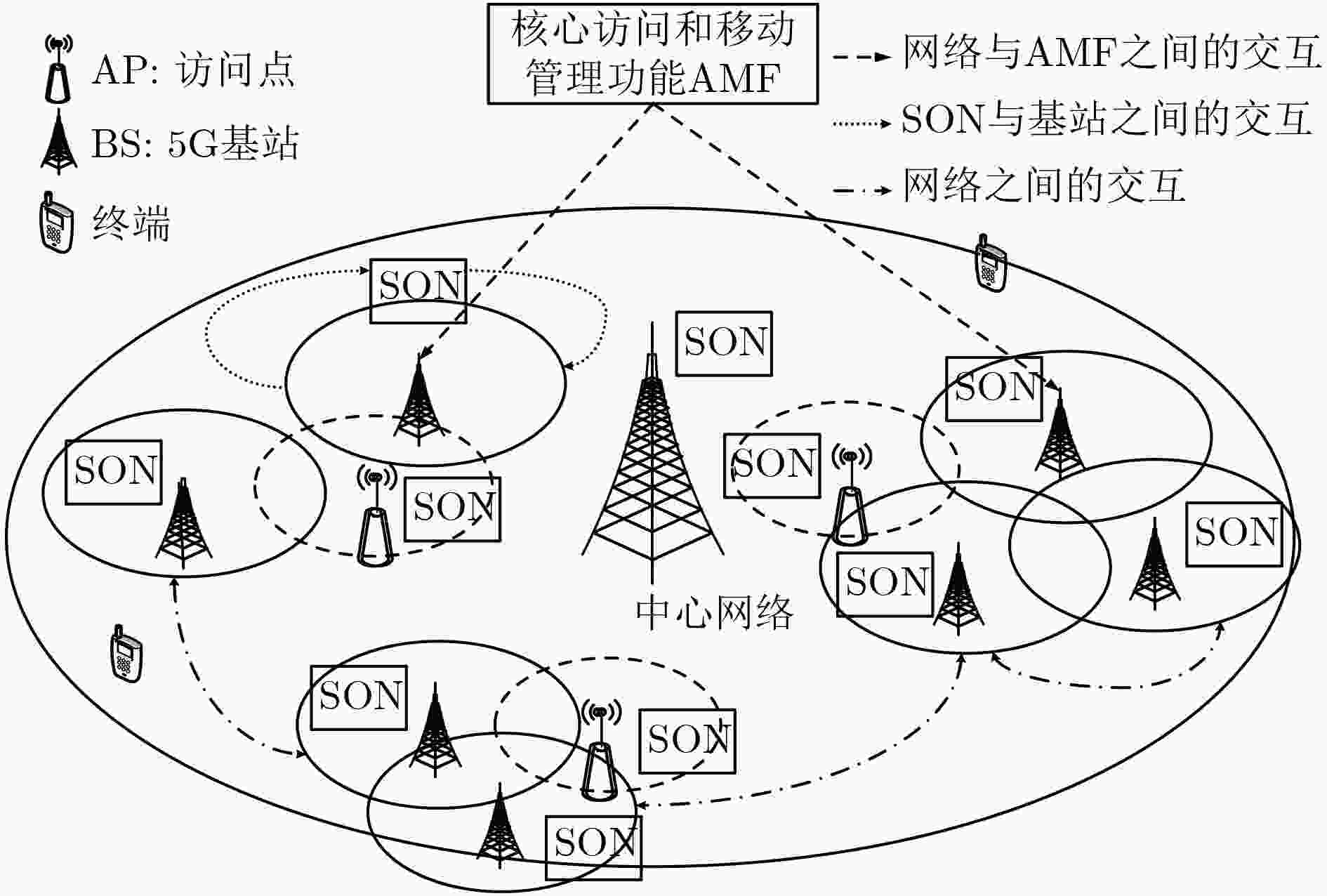
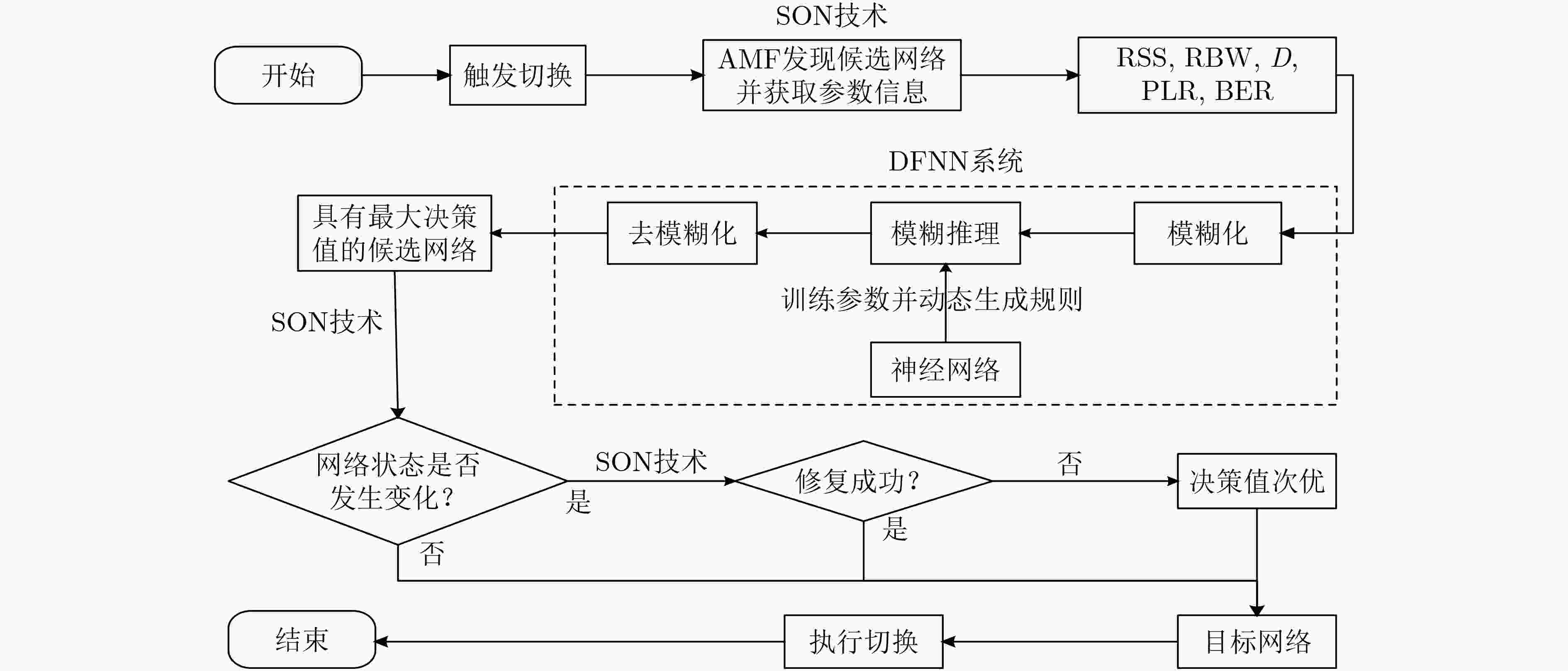

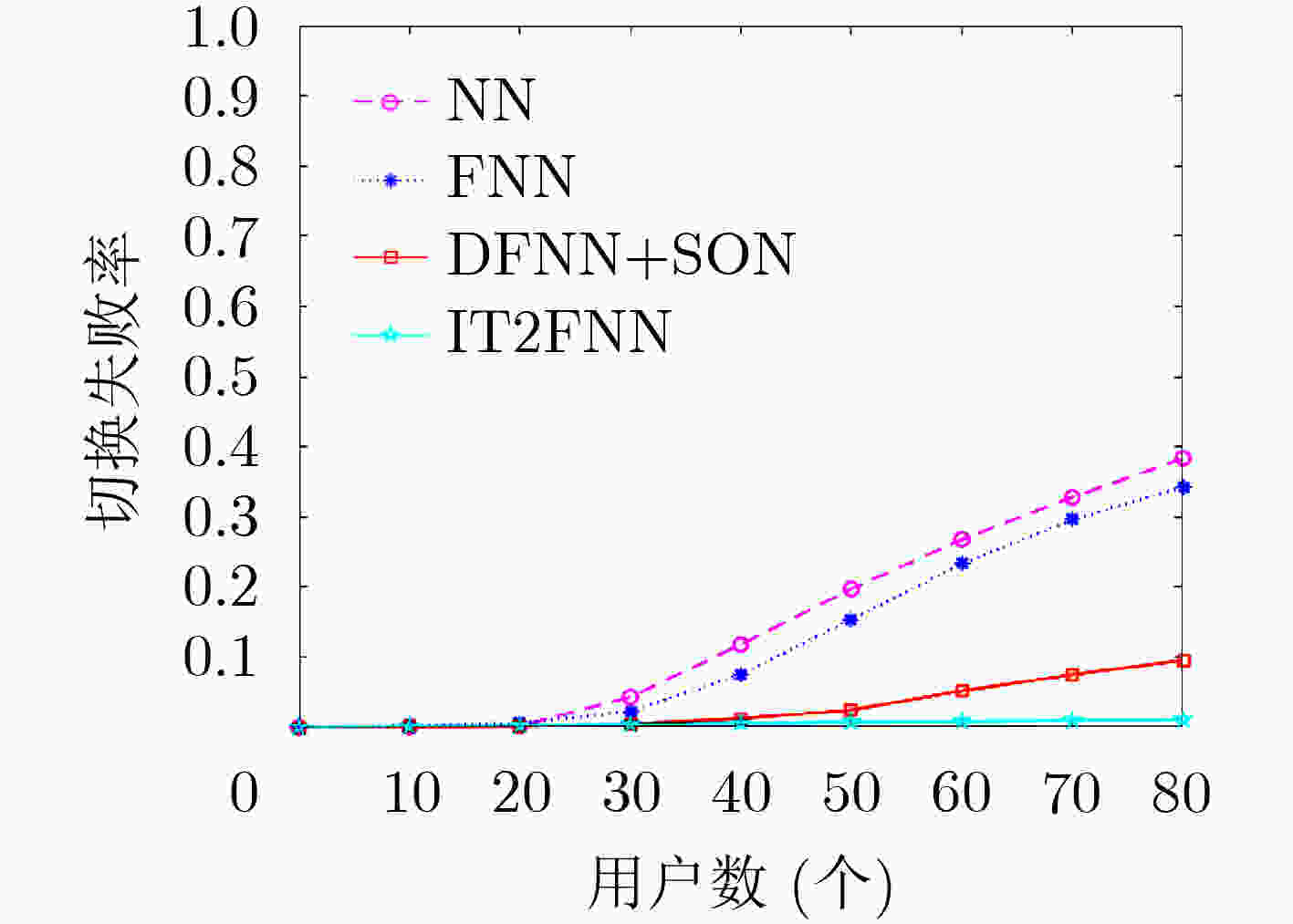
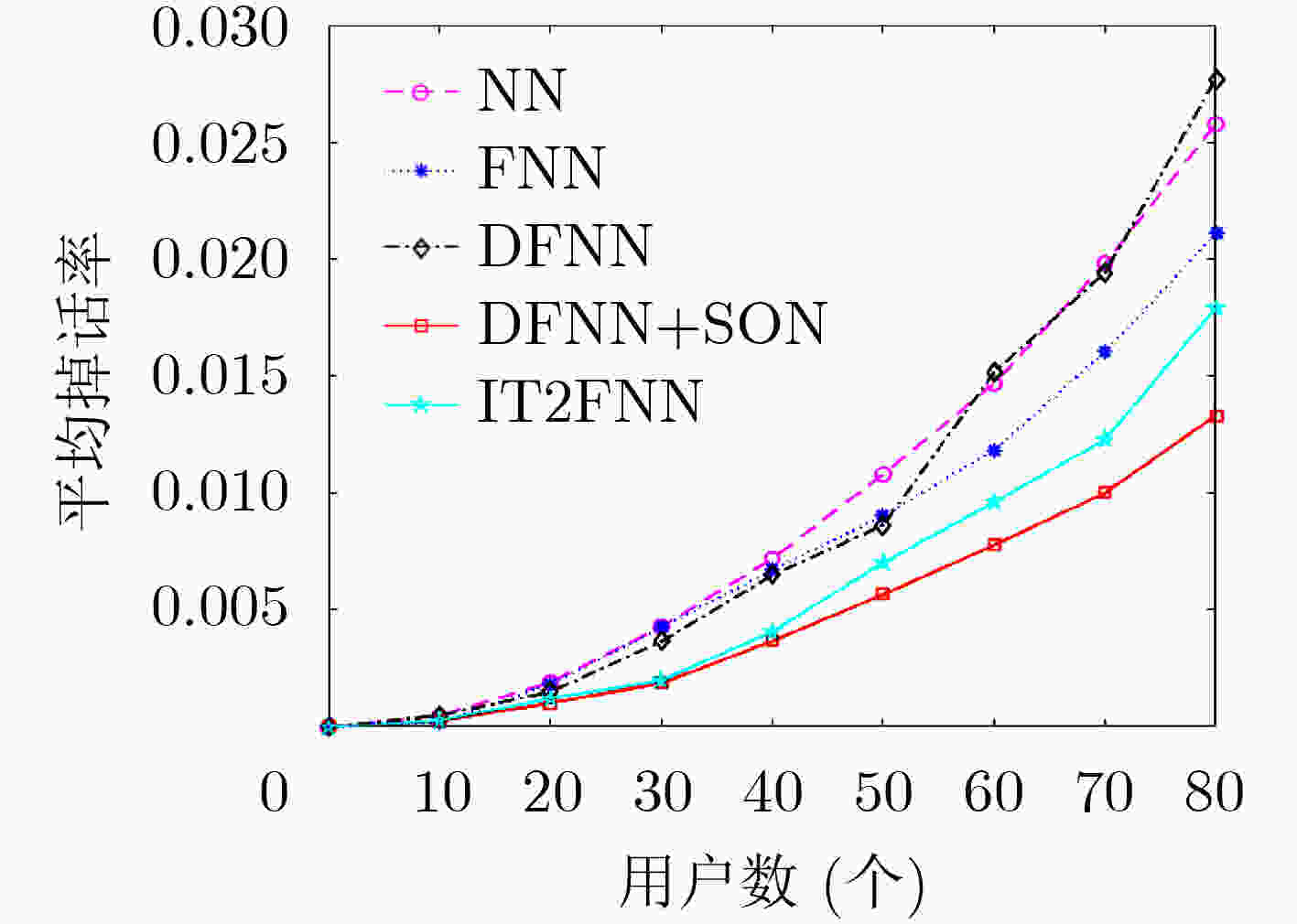
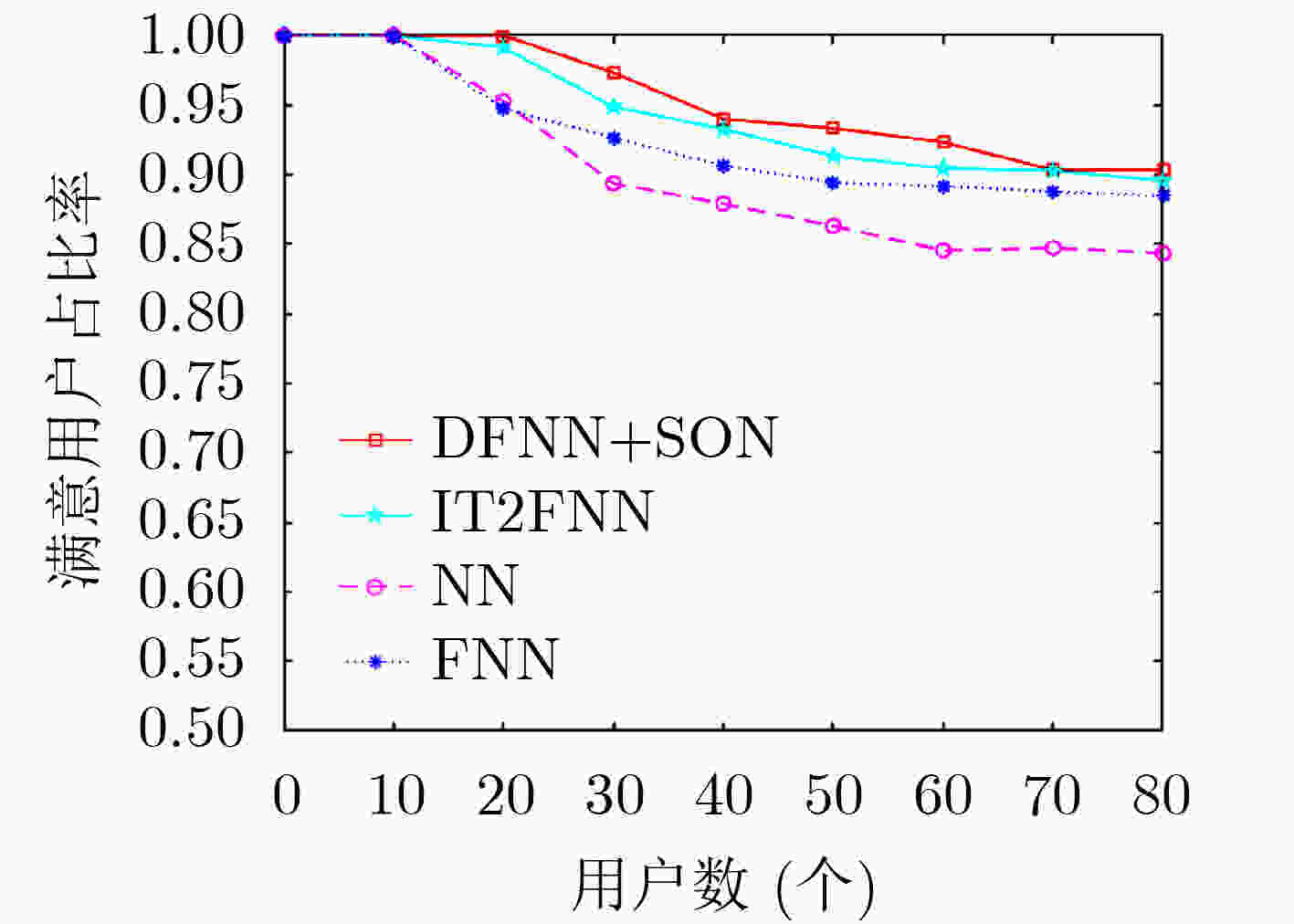
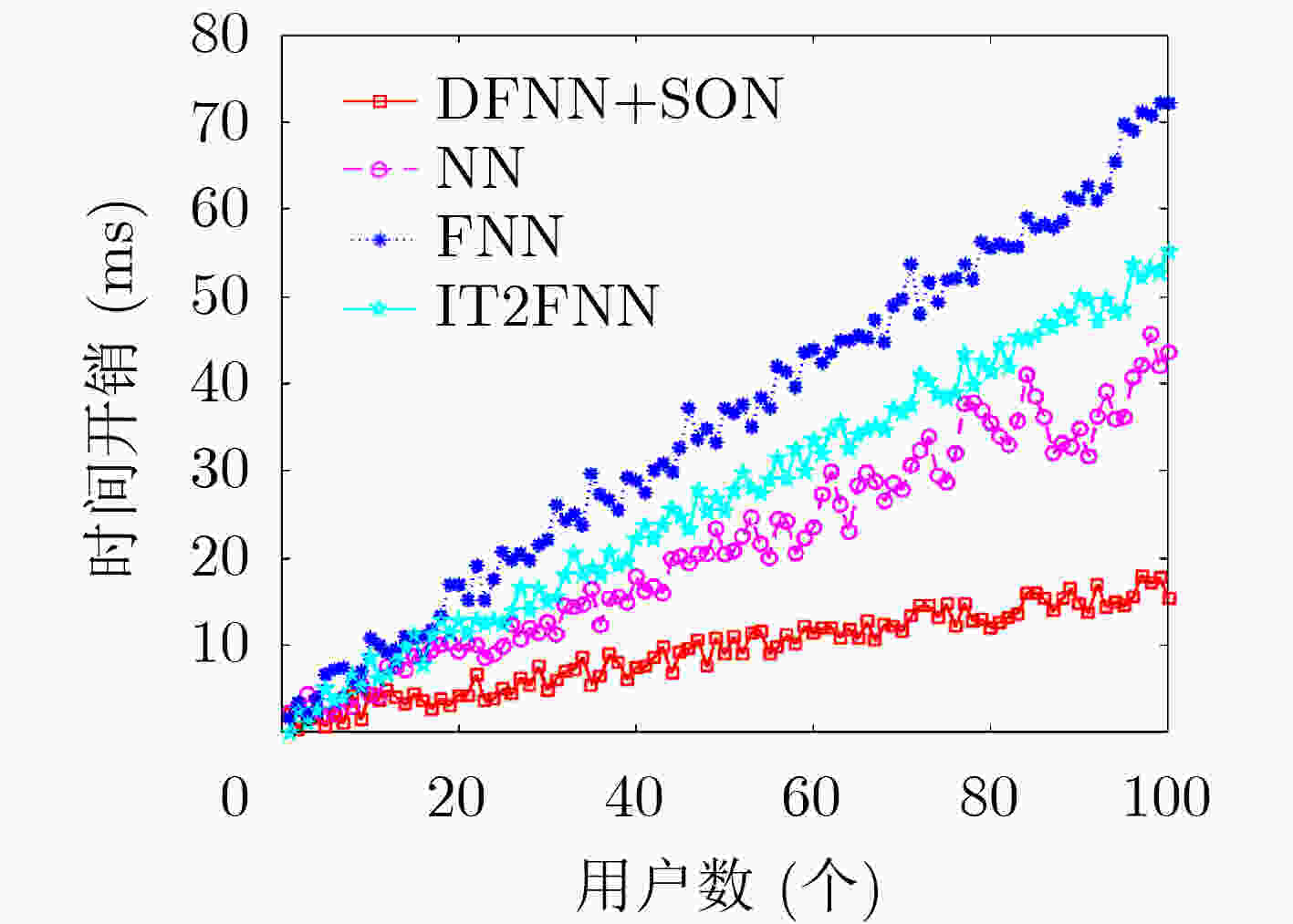


 下载:
下载:
